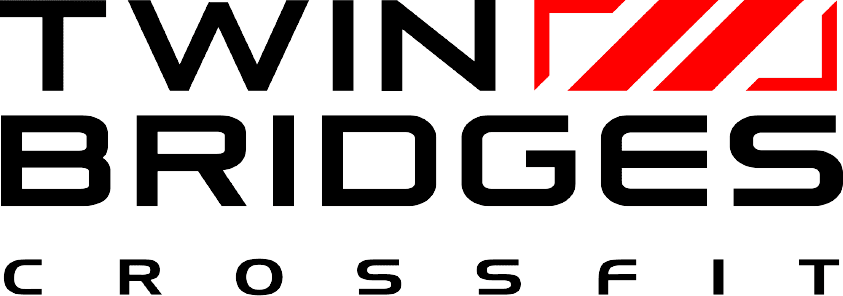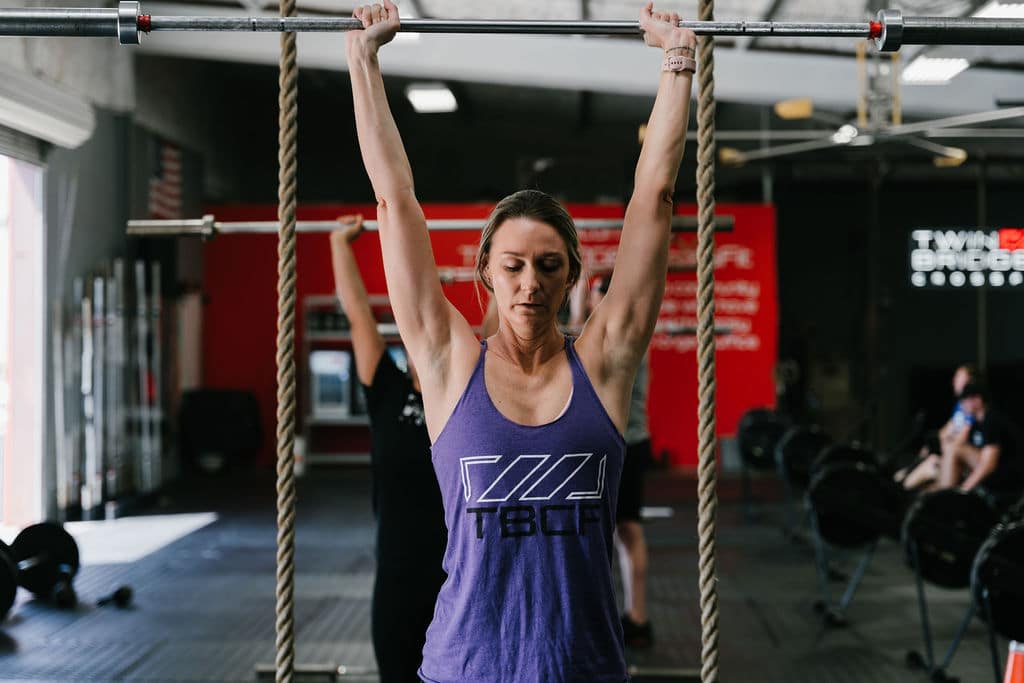Maintaining a stable midline is important for maximizing your performance and staying injury-free in the gym. Your midline is your entire spine down through your pelvis.
Midline stability refers to the ability of an athlete to lock their spine and pelvis together so they move as one unit and they maintain a neutral spine. This is especially important when performing explosive movements like Olympic lifts and the other functional movements we perform in CrossFit.
A stable midline also allows us to maximize force production and move heavy loads because it creates a solid base from which our limbs can move.
Additionally, good midline stability helps to prevent injuries by protecting our spine from excessive movement. Crossfit workouts often require us to move quickly and explosively, so it is especially important to maintain a stable midline during these workouts.
By focusing on maintaining a stable midline, you can improve your performance and reduce your risk of injury.
“Midline stability, control of the major body axis, is a CrossFit constant.” -CrossFit Founder Greg Glassman
How to maintain a stable midline
Breathing and Bracing
One of the best ways to maintain midline stability when performing weightlifting movements like squats and deadlifts is to learn to properly breathe and brace.
Just before you begin each rep, take a big breath and hold it. Begin the lift, making sure to stay tight and brace your core muscles. Exhale only at the end of each completed rep. Each new rep should start with a new deep breath.
Bracing your core is not sucking in, nor is it pushing your abs out. What you’re doing is tightening all the muscles that surround your spine. Take your deep breath, hold, and think about squeezing your stomach as hard as you would if someone was about to punch you in the stomach.
The combination of the full lungs and the braced core provides the maximum rigidity for your torso, which is important for maintaining midline stability while lifting weights.
One note here on weightlifting belts. There are too many athletes at too many gyms using weight belts improperly. They’re undermining their own core strength development and ultimately putting themselves at risk for injury.
At TBCF we make sure our athletes understand how to properly breathe and brace first, then we teach them how to properly use a weight belt–as a tool to add a little bit of extra support and rigidity for extra heavy lifts.
Bracing is an essential movement skill that promotes a stable spine and helps your midline resist movement from neutral. By taking the time to learn how to properly breathe and brace, you’ll be setting yourself up for a much safer and more successful CrossFit experience.
Technique, Technique, Technique
At Twin Bridges, we remind our athletes often that how they do anything is how they do everything. We insist on performing every rep with good technique so we’re always training our minds and bodies in the proper way to do things.
If the workout is over and you bend over and round your back to pick your empty barbell up off the ground, guess what…you just used one rep to teach your body to do it the wrong way.
Treat every rep the exact same, whether it’s light or heavy weight, whether it’s the very first rep of the day or the very last.
The Hip Hinge
One of our areas of focus is making sure our athletes understand the importance of and develop proper hip-hinge patterns.
The hip hinge is the crucial step that initiates nearly all human movement. Running, jumping, rowing, deadlifting, throwing, pressing…they all start with a hip hinge.
Developing a proper hip hinge is a key component in building midline stability and effective functional movement.
Try These Exercises
Some of the best exercises for improving midline stability are tempo squats, pallof presses, overhead squats, L-sit holds, and GHD sit-ups.
These exercises help to strengthen the muscles around your spine and improve your posture.
1. Tempo Squats
Tempo squats can be done loaded or unloaded, in any squat variation. Start your rep and take three seconds to move all the way to the bottom, end range of motion.
Once you reach the bottom of the squat, pause for one second before standing back up.
2. Pallof Presses
Pallof presses are another great exercise for improving midline stability.
Start by attaching a resistance band to a sturdy post or piece of equipment. Stand facing away from the attachment point and hold the band with both hands in front of your chest.
Keeping your core engaged, press the band straight out in front of you. Return to the starting position and repeat for 10-12 repetitions.
3. Overhead Squats
Overhead squats are nearly unparalleled in their ability to develop midline stability and to reveal when it is deficient in an athlete.
Perform the exercise the same way as an unloaded tempo squat, but with a PVC pipe or barbell held overhead with a wide grip.
4. L-Sit Holds
L-sit holds are a great exercise for improving midline stability and strengthening the muscles around your spine. To do this exercise, start by sitting on the ground with your legs straight out in front of you.
Place your hands beside you on the ground and lift your hips off the ground. Keep your legs straight and hold this position for 30-60 seconds.
5. GHD Sit-Ups
GHD sit-ups (GHDSU) are fantastic. In addition to being a great tool for developing midline stability, they’ll also teach athletes body control and awareness in space.
However, GHDSU are also extremely potent and must be administered in careful doses under the eye of a watchful coach.
Athletes who are new to the GHDSU should first focus on being able to perform a hollow body hold and hollow body rocks on the ground for 30-60 seconds.
From there the athlete can move on to performing the hollow body hold in the GHD machine, then to partial GHDSU reps, and finally to full GHDSU.
Once an athlete is cleared to perform full GHDSU, their volume should be monitored very carefully. An athlete who has never completed full GHDSU in a workout is likely to be sore even after doing ten for the first time.
How coaches can spot loss of midline stabilization
As coaches, we are trained to spot an unstable midline in every movement our athletes perform in the gym.
For example, do they lose the neutral position of their spine during a movement?
If an athlete rounds their back during a deadlift or while rowing, they have lost their midline. If they arch their back too much when pressing overhead, they have also lost their midline.
Similarly, if their feet come too far back during kipping pull-ups, they have once again lost their midline.
Proper midline stability is essential for all Crossfit movements and exercises, and as coaches, it is our job to ensure that our athletes maintain good form at all times.
How athletes can tell if they’ve lost midline stabilization
As a CrossFit athlete, it’s important to maintain midline stability throughout our full range of motion in order to perform movements correctly and avoid injury.
There are a few signs that can indicate if your midline stability isn’t up to par.
For example, if you notice low back pain after doing certain movements, this could be a sign that your spine and hips aren’t working together properly.
It’s important to remember that pain is a lagging indicator, meaning that if you’re experiencing pain in a certain area, it’s likely due to a movement deficiency.
By addressing these deficiencies and working on improving your midline stability, you can help prevent injury and improve your CrossFit performances.
Conclusion
CrossFit is a great way to get in shape, but it’s important to remember that proper form is essential to achieving results, staying safe, and reaching the goals you set for yourself.
The quality of your movement should always come first. At TBCF, we don’t care about how much weight you have on the bar until we’re satisfied that your mechanics are sound.
Athletes who are patient and understand that sustainable gains in strength and performance come gradually and with proper mechanics are setting themselves up for a long road of success.
About the Author
Edward Getterman is a Certified CrossFit Trainer (CF-L3) and the owner of Twin Bridges CrossFit in Waco, Texas. If he can’t be at the gym or at home, he’d prefer to be at Walt Disney World. He loves deadlifts, hates running, and believes above all else that CrossFit is for everyone.

